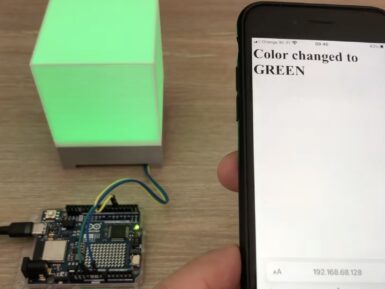
CircuitMess Spencer
DIY voice assistant that teaches you about microcomputers and electronics, sound processing, IoT, artificial intelligence, voice recognition and speech synthesis!
Follow the instructions here!
Overview
Spencer is a DIY voice assistant that talks, lights-up, connects to the internet, and understands simple voice commands.
He also has a funny personality, tells jokes, and finds new ones online.
The LED display on Spencer’s face has a 144-pixel LED grid that can show data, custom icons, animations, and scrolling text
Things you can do with Spencer:
- Ask about the weather forecast for your area
- Hear a joke
- Ask him to sing you a song
- Set a stopwatch
- Make Spencer display custom animations
- Laugh at his corny popular culture references
Talk to Spencer!
Spencer has a microphone and understands what you say (like, REALLY understands).
You can code new functions that will be triggered when you say certain sentences and words.
Get Inspired

Syntaxx is powered by three Arduino boards, each handling specific functions to create a seamless and dynamic performance:

It can be tough to get started with building an Internet of Things (IoT) project from the ground-up, as getting connected, serving a webpage, and managing other devices can all be a challenge to a beginner. This is why the YouTuber known as “Mario’s Ideas” made an end-to-end tutorial that details everything one might need to build a smart RGB lamp. Because the Arduino UNO R4 WiFi contains an ESP32-S3 chip for its Wi-Fi radio and Renesas RA4M1 microcontroller, it was the perfect candidate. Mario’s sketch begins with a call to initialize the Wi-Fi module before attempting to connect to his local access point. Once finished, it enters a loop that continuously checks if a client has connected to the web server, and if one has, reads the requested path while also seeing if the string contains “/H” to denote an “ON” command to set the LED. Toggling an LED is useful, but Mario wanted to take things a step further by building a tangible — in this case a lamp. His 3D-printed enclosure features a recessed base and translucent cube for diffusing the light emitted by a grid of NeoPixels. Controlling the color was just as easy since any browser could still send a request path containing a color and get back the lamp’s updated status. To see more about this IoT lamp project, you can watch Mario’s video below!







